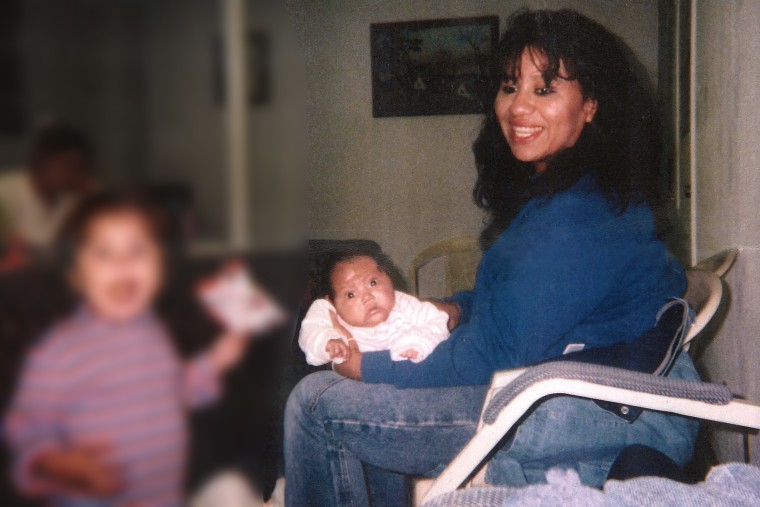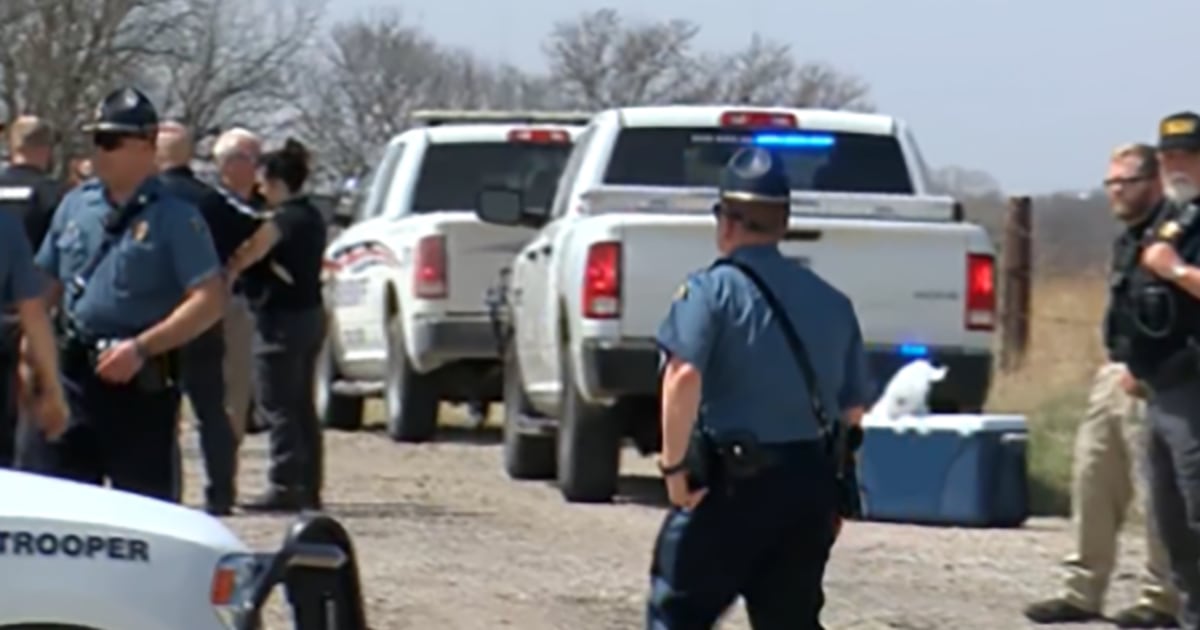Experts say Melissa Lucio’s case highlights police mistakes in questioning survivors of abuse
Hours after Melissa Lucio’s 2-year-old daughter died in 2007, the Texas Rangers took Lucio to an interrogation room, where they berated her, threatened her, and showed her photos of her dead child. her, her attorney said.
The Rangers believe Lucio killed Mariah on February 17, 2007said her refusal to make eye contact and her drooping shoulders were signs of guilt, according to a clemency petition filed on March 22. An appeals court opinion detailed details how an investigator said he “knew she did something” because of her attitude.
The hours-long interrogation ended with Lucio being coerced into confessing, the legal team said, arguing that past experiences of physical abuse and sexual assault made her vulnerable. responsible for her daughter’s death even though they say she is innocent.
The Texas Rangers did not respond to repeated phone calls and emails to comment on the incident.
Lucio is now fighting to stop her April 27 execution.
Experts who have studied false confessions and trauma responses say Lucio’s behavior is common among abuse victims and criticize Rangers’ interrogation tactics.

“What victims learn to do in these relationships to survive abuse or violence is they learn to surrender, they learn to conform, they learn to appease. So you react to you respond to threats, you respond to violence, you respond to demands, you respond to escalating voices by saying, ‘Yes, yes, I’ll do that,’ Mindy Mechanic, a psychologist “If you think about what’s happening in an interrogation, it’s a very parallel process,” said forensics and professor emeritus at California State University, Fullerton.
Lucy Guarnera, an assistant professor at the University of Virginia who studies false confessions, said law enforcement often uses “lie detection” techniques to look at a person’s actions. to predetermine innocence or guilt.
But this can be detrimental because “many trauma symptoms look like behavioral signs of lying,” says Guarnera.
Being interrogated for more than five hours
As noted in the appellate court’s opinion document, one of the investigators described Lucio’s conduct.
“When I walked in, she didn’t make eye contact with the investigator. She had her head down. So at that moment, I knew she was up to something,” he said. “And she felt ashamed of what she had done, and it was very difficult for her to admit to the officers what happened. That’s what I thought.”
The investigator went on to say that he knew Lucio wanted to confess “because she had that loose look.”
Details of what allegedly happened in the interrogation room are also included in the clemency petition. It said that Lucio, who was pregnant with twins, was questioned by two armed detectives for more than five hours. Detectives shouted at her, berated her as a neglectful mother, and implied that if Mariah’s death was not her fault it must have been one of her children, according to the petition.
At one point, a ranger came within inches of Lucio’s face and said there was evidence that didn’t look good, the petition states. He then told Lucio that he would “help” her if she told him what he already knew.
Detectives also gave Lucio a doll and asked her to prove what happened, according to the petition. They implied that if she did not confess, she would not be allowed to attend Mariah’s funeral.
Lucio has asserted her innocence more than 100 times – by saying 86 times that she did not kill Mariah and did not shake her head another 35 times, the lawsuit says.
As the interrogation dragged on, Lucio told detectives that she had beaten Mariah in the past, but did not say that she had killed the little girl. “What am I going to say? I am responsible for that,” she said, according to the lawsuit. During her trial, those statements were presented to the jury as her confession.
Lucio said her daughter – who has a scoliosis – fell down the outdoor stairs as the family prepared to move into a new apartment. Mariah was crying but didn’t seem to have any serious injuries, Lucio said. She died two days later.
However, prosecutors painted a different picture. Court documents show prosecutors argued at Lucio’s trial that she repeatedly abused Mariah and killed her by hitting her on the head.
The district attorney’s office said in a statement to Brownsville Herald that Mariah had been “violently beaten”, “had various healing bruises on her body” and had lost part of her hair. Lucio’s attorneys denied those claims and said the bruise was the result of the fall.
“Her autopsy revealed bruised kidneys, bruised spinal cord and bruised lungs,” the DA said, adding that an emergency room doctor said it was a case of child abuse. “absolutely the worst”.
Abuse victims are more likely to make false confessions
Lucio, born in Lubbock, Texas, endured years of abuse and violence, according to her attorney. At the age of six, she was sexually assaulted by one of her mother’s spouses, her legal team said in the clemency petition.
She is alleged to have been abused by multiple partners repeatedly throughout her teenage years and into adulthood.
As a result, she suffered from post-traumatic stress disorder and dissociation, according to her legal team. Lucio also has a lower-than-average IQ. These conditions are all risk factors that make it easier for a person to make false confessions, experts say.
“People often make false statements to get out of the interrogation room,” Guarnera said. “Interrogation is also a very cognitively demanding task so you need to listen, you need to analyze the truth and falsity of the information, you need to think about the options and future consequences of the person. me.”
Trauma victims may not fully understand the gravity of the situation they’re in, so “they won’t be able to watch and pay close attention and this can make you more accepting take recommendations from officers,” Guarnera said.
She explained: “You can see this in the case of Melissa Lucio. She almost just made it go back up, she said the same thing as what they told her because that’s the way it was. the easiest”.
Mechanic agrees, describing dissociation as a coping mechanism.
“This is a woman with a history of being threatened, being yelled at,” she said. “If those threats during the interrogation were the trigger and she checked, again she could easily say anything because she was trying to deal with what was feeling. like an existential threat.”
Shanda Crain, who was convicted of murdering her parents in 1995 in Washington Parish, Louisiana, said in an academic paper that she found similarities between her case and that of Lucio. Based on Project MarshallCrain, who maintains her chastity, wrote that she reminisced about her abusive husband when she was scolded by a detective. She said she believes she made the wrong confession in part because of her fear of violence.
Attempts to reach Crain were unsuccessful.
Interview informing about injury
The International Association of Chiefs of Police, a Virginia-based association for police leaders, has best practices guide Law enforcement agencies should follow for a successful injury notification interview. Among the tips are making the victim feel safe, having an advocate present in the room, showing compassion and not interrupting the victim.
The Office of Justice Programs, an agency of the US Department of Justice focused on crime prevention through research and development, said in a statement. publish reportage interviewing domestic violence victims that detectives should “create credibility for the victim without expecting a high degree of cooperation.”
Guarnera says these are great tips to follow, but points out that detectives often do the opposite when they believe someone is a suspect and not a victim.
“I think there is this thought or belief that if we abandon the accusatory, presumptive, coercive style of American interrogations, it will have bad consequences and we will Can’t blame everyone.
Guarnera said she believes a method used by police in Europe, called Peace modelwill help people with similar circumstances as Lucio.
The model was developed with the help of psychologists and uses an irrational approach to questioning. By law, detectives are also not allowed to lie to suspects. Andy Griffiths, a former senior UK police investigation officer, wrote in a Article 2012 that the Peace model trains officers to focus on “probing suspects’ accounts” rather than trying to force confessions.
“There are already police departments around the world that have adopted this investigative, fact-finding model,” says Guarnera. “You don’t create a solid division between the victim and the suspect… because a lot of the time you don’t know who is the victim and who is the suspect in the first place.”
As Lucio’s case draws to a close, a bipartisan group of Texas lawmakers led by Republican Representative Jeff Leach is pleading with Governor Greg Abbott and other elected officials to stop her execution. . On Wednesday, they visited Lucio at the Mountain View Unit in Gatesville.
“We promised #MelissaLucio and her family, we will do everything we can to prevent this irreversible injustice from happening later this month,” Leach wrote Thursday on Twitter. “And we intend to keep that promise.”
at Blogtuan.info – Source: nbcnews.com – Read the original article here



